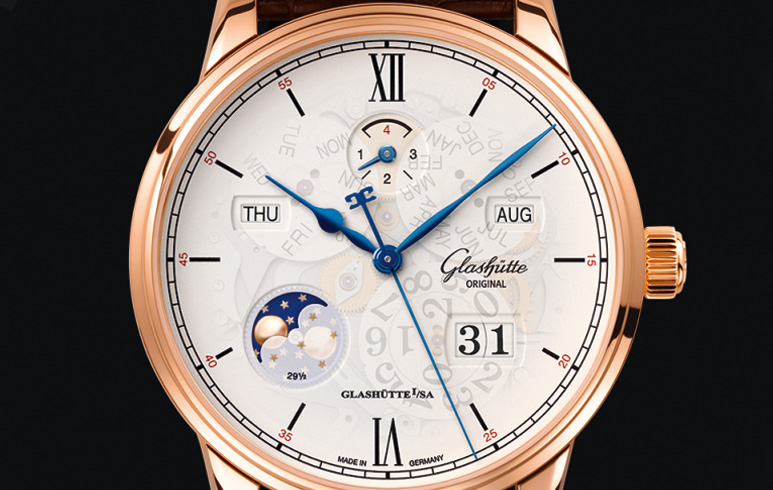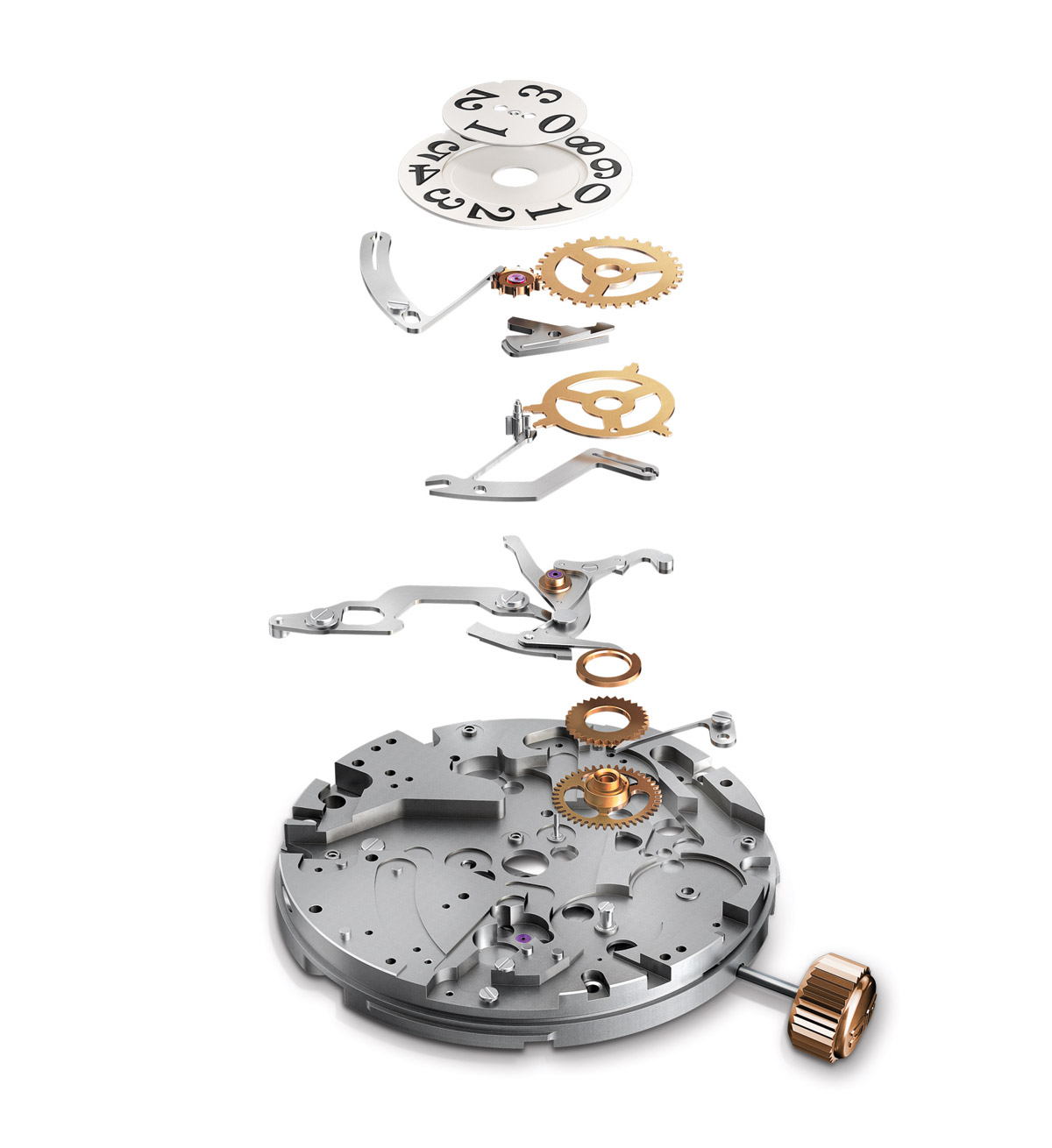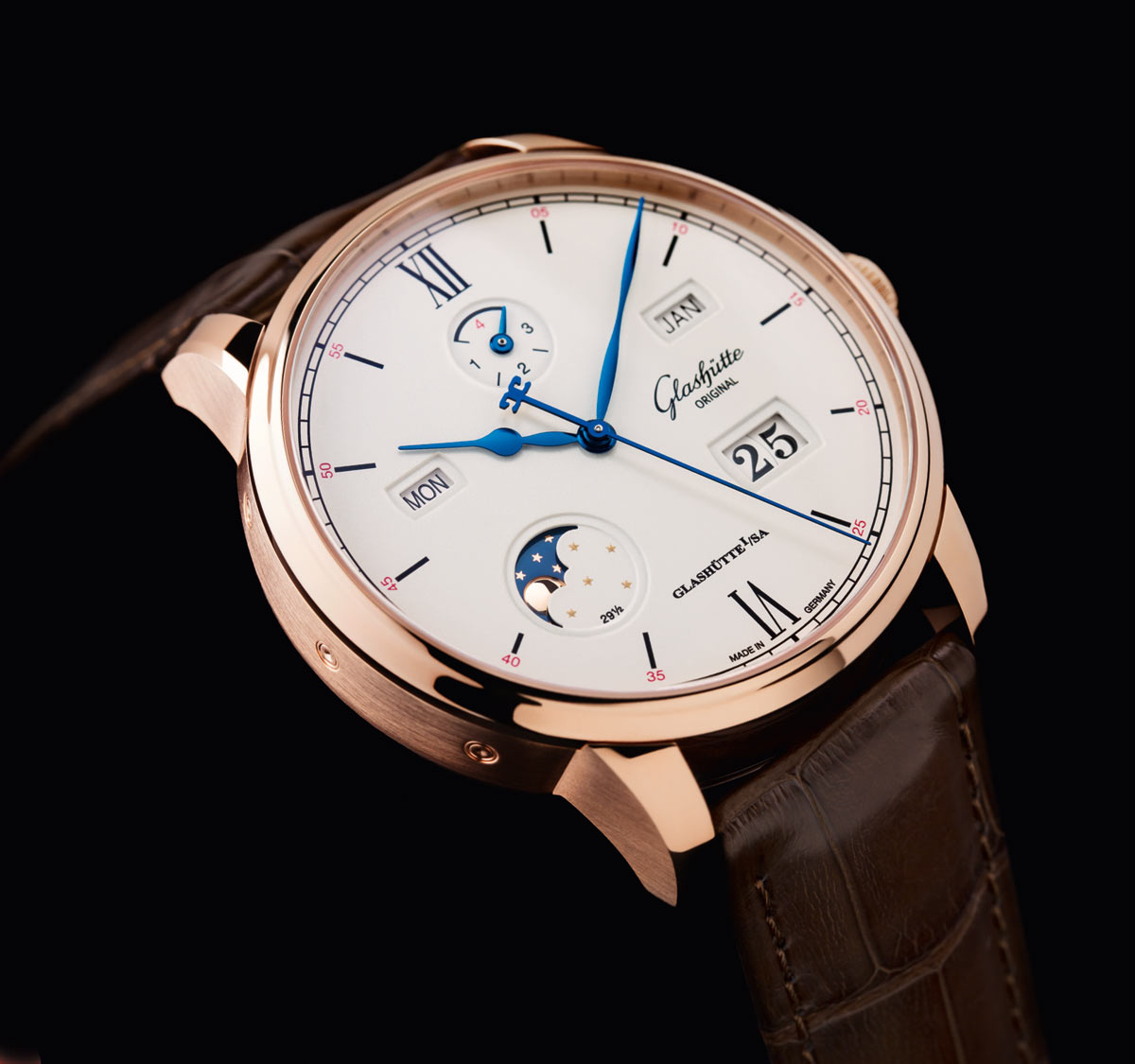Glashütte Original - Senator Excellence Perpetual Calendar: the Calibre 36 explained
As the new Senator Excellence Perpetual Calendar is now hitting Glashütte Original boutiques and the international retail partners of the brand, we are glad to share new pictures which offer a view behind the scenes of its ingenious Calibre 36 movement together with some explanations helpful to understand its principle of operation.

First showcased at Baselworld 2017, the Senator Excellence Perpetual Calendar represents an exceptional achievement in terms of visual balance, precision, and stability. This was possible thanks to the new automatic movement, whose innovative silicon spiral enables extreme precision, while a single spring barrel ensures a power reserve of more than 100 hours, at a frequency of 4 Hertz (28,800 vibrations per hour).
Hidden beneath the elegant dial, the Calibre 36 must overcome a number of different challenges while precisely displaying the date, weekday, month, leap year and moon phases.

Just consider how the signature “big date” mechanism automatically shows the first of the month without the wearer having to intervene. In this case the cleverly designed assembly around the multi-part 31-day gear serves as a mechanical memory: by means of a strategically placed recess in its fine-toothed units wheel it ensures, among other things, that on the 31st of the month the numeral 1 on the date wheel remains immobile. In turn, the so-called decimal wheel needs only four clearly visible teeth to govern the first numeral of the date: three equal sections – for the days 01-09, 10-19 and 20-29 – are followed by a sharply reduced segment. This ensures that the numeral 3's brief guest appearance in the first of the date positions is quickly terminated.

The moon phase complication combines artistic and technical elements. For the appearance of a gold-coloured moon against heavenly blue skies the dial experts make use – as in the version with the red gold case – of a thin bronze disc as a canvas. The stars are carefully printed on the ground and polished surface using a protective lacquer. After the entire surface has been rendered matte using sandblasting and then galvanised blue, the protective lacquer is dissolved, revealing the brilliant silhouette of the stars.

The moon phase complication combines artistic and technical elements. For the appearance of a gold-coloured moon against heavenly blue skies the dial experts make use – as in the version with the red gold case – of a thin bronze disc as a canvas. The stars are carefully printed on the ground and polished surface using a protective lacquer. After the entire surface has been rendered matte using sandblasting and then galvanised blue, the protective lacquer is dissolved, revealing the brilliant silhouette of the stars.

Following application of a further coat of protective lacquer, in a final step two round full moons are cut with specially honed diamond-tipped tools; the interim protective lacquer is then replaced by the definitive cellulose lacquer. The moon wheel has 59 teeth and advances one position each day. This makes it possible to display, in the gently curved dial window at 8 o'clock, a moon cycle of precisely 29.5 days, using the two moons in alternating shifts; the transition remains invisible to the wearer.
The implementation of the calendar functions using display windows rather than pointers lends this classic grand complication an elegant and understated appearance. One of the most significant challenges of the watchmaker's art, the perpetual calendar has the ability to account for leap years.

A central, multi-arm lever ensures that the mechanical calendar adjusts the displays simultaneously, at the right point in time, and not just by one but by two, three or even four positions (from 28 February to 1 March). The information regarding leap years and the length of the months comes from a multi-part cam wheel mounted above its month disc, with its clear recess for the month of February.
This "February-cam" performs one revolution in four years. Only once in four years its single tooth precisely aligns with the February mark on the month disc below: exactly on February 29th in a leap year.
As complex as the refined mechanics of the movement appear, it is remarkably easy to access the various functions. Discreet correctors on both side of the case permit the individual adjustment of weekday, month and moon phase displays. The universal corrector makes it possible to adjust the day, date and month simultaneously, if necessary. glashuette-original.com



Comments
Leave a comment